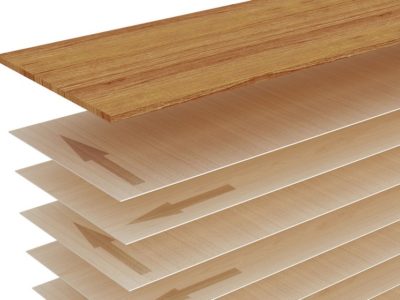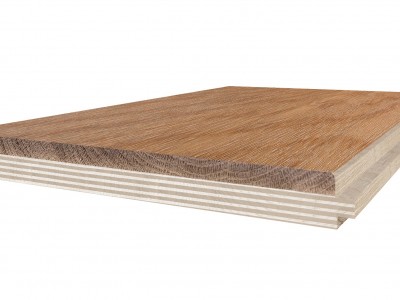
Proparq timber flooring consists of a two-layer wooden surface with every single plank consisting of a thick face layer of hardwood combined with tough marine-grade birchwood ply.
The face layer gives the product its final appearance, and so the timbers used must be very carefully selected. Throughout the Proparq production cycle, the face layer wood under goes several inspections by skilled staff, with rejection o fany material that does not meet set quality parameters.
The birchwood ply plays an extremely important functional role. This support consists of 5 to 9 layers of birchwood, each glued onto the layer below at right angles in a cross-grain arrangement. The structure balances the natural stress within the material to give stable, flexible flooring with resistance to twisting and warping.


The hardwood face layer is glued to the birchwood ply at high pressure with extremely high-performance phenol adhesive to provide water-resistant bonds, compliant with the UNI EN ISO 204 CLASS D4 standards. The result is a perfect bond between the two timbers, making them virtually inseparable.
During shaping, the marine-grade birchwood ply is processed to form tongue-and-groove joints of micrometric precision on all four sides, so that there will be practically no space between planks in a well-laid floor. This provides a very durable flooring of great beauty. It also prevents liquids or dirt from penetrating the wood, causing damage and potential health hazards.
At this point, cross-cuts are also made in the underside of each plank, giving it the flexibility needed to adapt to the laying surfaces, even where there are flaws in the screed or existing flooring. This enables the Proparq product to lay perfectly flat and display a beautiful appearance.

